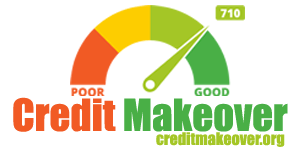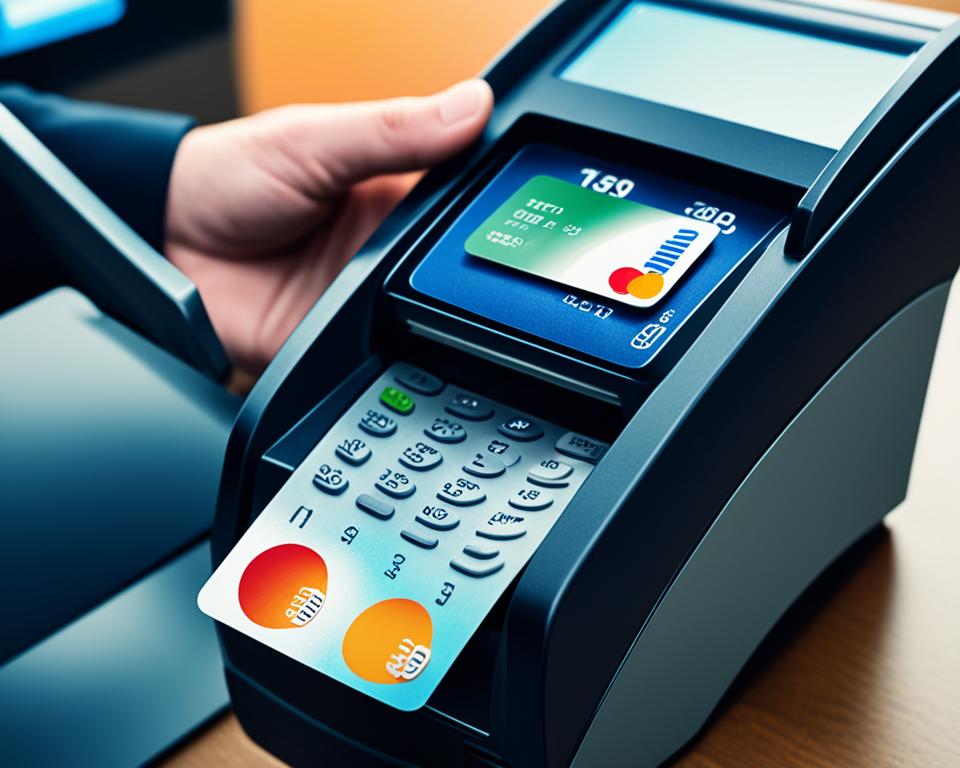Credit card debt can have serious consequences for individuals and their financial well-being. It is important to understand the risks and negative effects associated with credit card debt in order to make informed financial decisions.
Unlike “good” debt, such as a mortgage or education loan, credit card debt is typically used for depreciating purchases or consumables. This means that the items or experiences purchased using a credit card do not retain their value or provide a lasting investment.
One of the main reasons why credit card debt is considered bad is the high-interest rates associated with it. Credit card interest rates often exceed double-digits, making credit card debt one of the most expensive forms of debt. This can result in individuals paying significantly more in interest over time.
Another drawback of credit card debt is the long repayment periods. Making only the minimum monthly payment can extend the repayment timeline to years or even decades. This not only results in individuals paying more in interest but also delays their ability to become debt-free.
Credit card debt also lacks ongoing value. Unlike other forms of debt that can lead to long-term returns or improved earning potential, credit card debt is typically used for purchases that do not appreciate in value. This can limit individuals’ ability to achieve their financial goals, save for the future, or make career choices based on personal interests rather than financial obligations.
Furthermore, credit cards can make it easy for individuals to overspend beyond their means due to their convenience and disconnect from physical cash. This lack of self-control can lead to mounting credit card debt and financial difficulties.
Credit card debt can also have a negative impact on an individual’s credit score. Late payments, high credit card balances, and multiple credit card applications can all contribute to a lower credit score. This can affect not only an individual’s ability to secure loans or mortgages but also potential employment opportunities.
Overall, credit card debt should be managed carefully to avoid the risks and negative effects associated with it. Understanding credit card terms, paying off balances in full, and having a budget can help individuals avoid falling into the trap of excessive debt.
Key Takeaways:
- Credit card debt can lead to financial strain and limited financial goals.
- High-interest rates make credit card debt one of the most expensive forms of debt.
- Making only the minimum payment extends the repayment period and increases the total amount of interest paid.
- Credit card debt does not represent an investment in assets that appreciate in value.
- Overspending with credit cards can lead to mounting debt and financial difficulties.
Double-Digit Interest Rates
One significant reason why credit card debt is considered bad is due to the high-interest rates associated with it. Credit card interest rates can often exceed 20%, even for individuals with good credit. In comparison, loans like student loans, mortgages, and personal loans often have much lower interest rates. This makes credit card debt one of the most expensive forms of debt, causing individuals to pay significantly more in interest over time.
When individuals carry a balance on their credit cards, they accrue interest charges on the remaining amount owed. With double-digit interest rates, even a small balance can quickly snowball into a significant debt burden. The high-interest rates on credit cards can make it challenging for individuals to pay off their balances efficiently, often resulting in prolonged debt repayment and larger overall interest payments.
“Credit card debt is like a snowball rolling down a hill. It starts small, but as the interest adds up, it becomes larger and larger, making it harder to pay off.”
For example, let’s say someone has a credit card balance of $5,000 with an interest rate of 18%. If they make only the minimum monthly payment, it could take them years or even decades to pay off the entire balance. Meanwhile, the interest charges continue to accumulate, significantly increasing the total amount paid over time.
These double-digit interest rates can create a cycle of debt that is difficult to break free from. As individuals struggle to keep up with high-interest payments, it becomes challenging to make progress in reducing their credit card debt. This can hinder their financial stability and hold them back from achieving their long-term financial goals.
Long Repayment Periods
One of the reasons why credit card debt is widely regarded as bad is the long repayment periods it entails. When individuals choose to make only the minimum monthly payment, they prolong the time it takes to fully pay off the balance. Credit card companies often set low minimum payment requirements, making it tempting for individuals to opt for this option.
However, this decision comes with a cost. By paying only the minimum required amount, it can take years or even decades to clear the debt completely. During this extended period, individuals end up paying a significant amount in interest charges due to the high-interest rates associated with credit cards.
It is important for individuals to understand that paying off credit card debt solely with minimum payments not only extends the repayment period but also leads to higher overall interest payments. By paying more than the minimum required, individuals can significantly reduce the time needed to eliminate their credit card debt and save money on high-interest payments.
Credit Card Debt Payoff Comparison
| Payment Strategy | Time to Pay Off | Total Interest Paid |
|---|---|---|
| Minimum Payments Only | 15 years | $7,500 |
| Above Minimum Payments | 3 years | $2,000 |
| Paying Off in Full | Immediate | $0 |
The table above demonstrates the impact of different payment strategies on credit card debt. By making only minimum payments, it takes 15 years to pay off the debt with a total interest payment of $7,500. On the other hand, choosing to pay above the minimum required amount reduces the payoff time to just 3 years, lowering the total interest paid to $2,000. Opting for paying off the balance in full eliminates both the interest charges and the repayment period immediately.
By being proactive in paying off credit card debt and allocating more than the minimum amount towards monthly payments, individuals can accelerate their journey to achieving debt-free financial stability.
“Paying only the minimum on credit card debt is like treading water in a vast ocean of endless debt.” – Financial Advisor

No Ongoing Value
Credit card debt often falls into the category of “bad” debt due to its lack of investment in assets that provide ongoing value. Unlike “good” debt, such as a mortgage or education loan, which can lead to long-term returns or improved earning potential, credit card debt is typically associated with purchases that do not appreciate in value. These purchases include items like clothing, home furnishings, and consumables.
While these purchases are necessary and contribute to our daily lives, paying interest on them can significantly increase their true cost. Unlike debt for appreciating assets, such as a home or education, credit card debt lacks the potential for long-term value and return on investment. It’s essential to understand the distinction between good and bad debt to make informed financial decisions.
Comparing Good Debt and Bad Debt
A comparison between good debt and bad debt reveals the contrasting characteristics that differentiate them. Good debt typically involves borrowing for appreciating assets, such as:
- Affordable home loans
- Education loans for skill development or career advancement
- Business loans to invest in growth opportunities
These types of debt have the potential to increase personal wealth, generate income, or enhance earning potential over time.
On the other hand, bad debt, such as credit card debt, arises from purchasing items that do not hold or increase their value. These include:
- Clothing and fashion accessories
- Electronics and gadgets
- Dining out and entertainment
While these purchases are enjoyable and necessary for daily life, they do not offer ongoing value or potential returns.
The Cost of Credit Card Debt
Understanding the cost of credit card debt is crucial in managing personal finances effectively. Given its high-interest rates and the possibility of accumulating balances over time, credit card debt can become a financial burden. By carrying credit card debt on depreciating purchases, individuals find themselves paying interest without the potential for long-term value or return.
Let’s examine an example to illustrate the cost of credit card debt:
| Purchase | Amount | Interest Rate | Repayment Period | Total Cost |
|---|---|---|---|---|
| Clothing | $500 | 20% | 2 years | $647.94 |
| Home Furnishings | $1,000 | 19.99% | 3 years | $1,345.19 |
| Consumables | $300 | 18% | 1 year | $339.06 |
In this example, even relatively modest credit card debt can result in significant additional costs due to high-interest rates and extended repayment periods. By acknowledging the lack of ongoing value associated with these purchases, individuals can make more informed decisions to avoid unnecessary debt and prioritize long-term financial well-being.
Managing credit card usage responsibly and looking for alternative financing options, such as loans or deferred payment plans, for larger purchases can help prevent unnecessary credit card debt and its associated costs.
Lack of Self-Control
Credit cards can be dangerous for individuals who struggle with self-control when it comes to spending. Research has shown that people tend to spend more when using credit cards compared to cash. The convenience and disconnect from physical cash make it easier to make impulsive purchases and overspend beyond one’s financial limits.
This lack of self-control can lead to a vicious cycle of overspending and accumulating credit card debt. It’s essential for individuals to recognize the credit card traps and develop strategies to avoid falling into these patterns.
“Overspending with credit cards is a common problem that many people face. It’s easy to get caught up in the excitement of making purchases without realizing the long-term consequences. It’s important to exercise self-control and carefully consider the impact of each purchase on your financial well-being.” – Financial Advisor
One effective way to combat overspending with credit cards is to create a budget and stick to it. By setting spending limits for different categories, individuals can ensure that their credit card usage aligns with their financial goals. Additionally, regularly tracking credit card expenses can provide a clear overview of spending habits and help identify areas where self-control may need improvement.
Developing Self-Control
Building self-control with credit card use requires discipline and commitment. Here are some strategies to help individuals develop healthier spending habits:
- Set spending limits: Establish clear boundaries for credit card usage and avoid exceeding them.
- Use cash or debit cards: Consider using alternative payment methods that provide a more tangible sense of spending.
- Avoid impulsive purchases: Take time to evaluate whether a purchase is necessary or if it’s a spur-of-the-moment desire.
- Practice delayed gratification: Delaying a purchase can help determine whether it’s truly essential or simply an impulse buy.
By being aware of the credit card traps and prioritizing self-control, individuals can avoid overspending and the accumulating burden of credit card debt.

Expensive Interest Charges
One of the significant drawbacks of credit card debt is the high cost of interest charges. When individuals do not pay off their credit card balances in full each month, interest begins to accumulate on the remaining balance, resulting in expensive interest charges over time.
Interest charges are a percentage of the credit card balance and can quickly add up, making purchases much more expensive in the long run. By paying off credit card balances in full, individuals can avoid these costly interest charges and save money.
“Paying off your balances in full each month not only helps you avoid interest charges but also ensures that you are actively managing your credit card debt and not accumulating unnecessary financial burden.”
Understanding Interest Charges
To better understand the impact of interest charges on credit card debt, consider the following example:
| Credit Card Balance | Interest Rate | Minimum Payment | Time to Pay Off | Total Interest Paid |
|---|---|---|---|---|
| $5,000 | 20% | $100 | 11 years | $4,830 |
| $5,000 | 20% | $250 | 2 years | $1,180 |
In the first scenario, the individual pays the minimum payment of $100 each month, resulting in a repayment period of 11 years and total interest paid of $4,830. However, by increasing the monthly payment to $250, the individual can pay off the balance in just 2 years, saving a significant amount on interest charges – a total of $3,650.
By paying off credit card balances in full, individuals can free themselves from the burden of interest charges, allowing them to allocate those funds towards savings, investments, or other financial goals instead.
Debt’s Impact on Financial Goals
Having credit card debt can have a significant impact on individuals’ ability to achieve their financial goals. The burden of debt can restrict available funds for other priorities, such as saving for retirement, taking vacations, or pursuing further education. When a large portion of income is allocated towards paying off debt, limited savings can hinder individuals’ long-term financial stability and prevent them from achieving important milestones.
Credit card debt can also cause individuals to delay their educational aspirations. The financial strain of debt repayment may make it difficult to invest in higher education or professional development opportunities. This delay in pursuing educational goals can have long-term consequences on career advancement and earning potential.
Furthermore, debt can influence career choices, forcing individuals to prioritize job opportunities based on financial obligations rather than personal interests. When burdened with significant debt, individuals may feel compelled to accept positions solely for income stability, even if they are not aligned with their passions or long-term career goals. This can result in individuals feeling trapped in jobs they don’t enjoy, leading to dissatisfaction and a lack of fulfillment.
| Financial Impact of Debt | Examples |
|---|---|
| 1. Limited Savings | Difficulty saving for retirement |
| 2. Delayed Educational Goals | Postponing higher education or professional development |
| 3. Debt and Career Choices | Accepting jobs solely for income stability, disregarding personal interests |
It is crucial for individuals to prioritize managing their debt effectively in order to regain control of their financial future. By implementing strategies to pay off credit card debt and reduce overall debt burdens, individuals can work towards achieving their financial goals and pursue the life they envision.

Credit Score Impact
Credit card debt can have a negative impact on an individual’s credit score. Late payments, high credit card balances, and multiple credit card applications can all contribute to a lower credit score. This can have various consequences that affect an individual’s financial well-being.
The late payments on credit card debt can significantly lower a person’s credit score. When payments are made after the due date, credit card issuers may report the late payment to credit bureaus, which can then be reflected in the individual’s credit history. This negative information can stay on the credit report for up to seven years, making it harder for the individual to obtain credit in the future.
High credit card balances can also be detrimental to a credit score. The credit utilization ratio, which is the percentage of available credit that is being used, is an important factor in credit score calculations. When credit card balances are close to the credit limit, it can indicate a higher risk of defaulting on payments, and this can result in a lower credit score.
Furthermore, multiple credit card applications within a short period can negatively impact a person’s credit score. Each credit card application typically results in a hard inquiry on the credit report, and multiple hard inquiries can signal financial instability to potential lenders. This can make it harder for the individual to obtain favorable loan or credit terms in the future.
An individual’s credit score is an important factor in many aspects of life, beyond just obtaining credit. Some employers check credit scores when considering job applicants, particularly for positions that involve financial responsibility. A low credit score can potentially affect job prospects, limiting employment opportunities.
In addition, a lower credit score can result in higher interest rates on loans and mortgages. Lenders view individuals with lower credit scores as higher-risk borrowers, so they may offer loans with higher interest rates to mitigate that risk. This can make it more challenging to secure financing, potentially leading to higher borrowing costs.
To illustrate the impact of credit card debt on credit scores, consider the following table:
| Credit Score Range | Credit Card Debt Impact |
|---|---|
| Excellent (800-850) | Negative impact: Credit score may drop to good or very good range |
| Good (670-799) | Negative impact: Credit score may drop to fair or average range |
| Fair (580-669) | Negative impact: Credit score may drop to poor or bad range |
| Poor (300-579) | Significant negative impact: Credit score may drop further, limiting access to credit and favorable terms |
It’s important to note that credit scores can be improved over time by taking steps to reduce credit card debt and maintain responsible credit card use. Paying credit card bills on time, keeping credit card balances low, and avoiding unnecessary credit card applications can all help improve credit scores and lead to better financial opportunities.
Minimum Payments Trap
When it comes to credit card debt, making only the minimum payments can be a dangerous trap. While it may seem convenient to pay the smallest amount due each month, this approach prolongs the repayment period and increases the total amount of interest paid over time. By paying only the minimum, individuals find themselves caught in a cycle of ever-increasing debt.
Instead of falling into this trap, it’s crucial to pay more than the minimum payment required. By doing so, individuals can make significant progress in reducing their credit card debt and ultimately pay off their balances more quickly. Not only does this accelerate the debt repayment process, but it also helps individuals save on interest charges.
Consider the following scenario:
| Credit Card Balance | Interest Rate | Minimum Payment | Monthly Payment | Time to Pay Off Balance | Total Interest Paid |
|---|---|---|---|---|---|
| $5,000 | 18% | $125 | $300 | 1 year, 10 months | $703 |
| $5,000 | 18% | $125 | $500 | 11 months | $624 |
| $5,000 | 18% | $125 | $750 | 8 months | $465 |
Table: Comparison of Credit Card Repayment Options
In the table above, we can see the impact of different monthly payment amounts on credit card debt. By paying only the minimum payment of $125, it would take approximately 1 year and 10 months to pay off a $5,000 balance, resulting in a total interest payment of $703. However, by increasing the monthly payment to $300, the balance could be paid off a full 9 months earlier, with a total interest payment of just $624. Moreover, by making a monthly payment of $500 or $750, the balance could be cleared in 11 months or 8 months, respectively, with significantly lower interest payments.
The example emphasizes the importance of paying more than the minimum payment. By doing so, individuals can significantly reduce both their repayment period and the overall interest paid on their credit card debt. This approach leads to faster debt elimination and greater financial freedom.
Don’t fall into the minimum payments trap. Take control of your credit card debt by paying more than the minimum and watch as your balance decreases faster than you might have thought possible.
Lack of Understanding Credit Terms
When it comes to credit cards, understanding the associated terms is crucial. Unfortunately, credit card offers can be confusing, leading to misunderstandings that can have serious consequences. Each credit card may have different interest rates and fees, making it essential for individuals to comprehend the terms and conditions specific to their cards.
Not understanding credit card terms can result in various negative outcomes. For instance, if individuals are unaware of the annual percentage rate (APR) or fail to grasp how interest rates are applied, they may find themselves paying higher fees and interest charges than expected.
Interest rates play a significant role in credit card debt:
| Consequences of Not Understanding Credit Card Terms |
|---|
| Increased fees |
| Higher interest rates |
| Potential damage to credit scores |
The Impact of Increased Fees
One consequence of not understanding credit card terms is the potential for increased fees. Credit card companies may impose various fees for late payments, exceeding credit limits, or engaging in certain transactions.
The Burden of Higher Interest Rates
Another consequence is the possibility of higher interest rates. If individuals are not aware of their credit card’s specific interest rate structure, they may face unexpectedly high interest charges, leading to more expensive debt that can be challenging to pay off.
The Importance of Credit Scores
Not understanding credit card terms can also harm credit scores. Late payments, maxing out credit limits, or failing to manage credit effectively can lower credit scores, making it difficult to obtain future credit or secure favorable interest rates for loans and mortgages.
To avoid falling into these pitfalls, it’s essential to carefully read and comprehend the terms and conditions of credit cards. By educating themselves on credit card terms, individuals can make informed decisions, effectively manage their credit, and maintain their financial well-being.

Difficulty Tracking Spending
Credit cards offer convenience and flexibility, but they can also make it challenging to effectively track spending. This is especially true when individuals use multiple credit cards or combine credit card transactions with cash and debit card purchases.
When credit card expenses are spread across different cards, it becomes difficult to keep track of each transaction and its impact on the overall budget. Without a clear understanding of where money is being spent, individuals may unknowingly overspend and find themselves accumulating excessive credit card debt.
Creating a budget and tracking credit card spending is an effective strategy to stay on top of finances and avoid falling into the trap of overspending. By closely monitoring credit card transactions, individuals can gain insights into their spending patterns and identify areas where they may need to cut back.
Here are a few tips for tracking credit card spending:
- Keep receipts: Hold onto receipts for all credit card purchases to make it easier to reconcile them with credit card statements.
- Use expense tracking apps: Take advantage of expense tracking apps that allow users to link their credit cards and automatically track and categorize spending.
- Review statements regularly: Set aside time each month to review credit card statements and reconcile them with receipts and other records.
- Monitor online accounts: Regularly check credit card accounts online to stay informed about current balances, available credit, and recent transactions.
- Set spending limits: Establish spending limits for different categories, such as dining out or entertainment, and track progress toward these limits to avoid overspending.
By implementing these strategies, individuals can gain better control over their credit card spending, avoid overspending, and prevent the accumulation of excessive credit card debt.
Risk of Credit Card Fraud
Credit card fraud and identity theft pose significant risks for individuals who hold credit cards. These crimes can lead to unauthorized charges, financial loss, and potential damage to one’s credit score. To protect yourself from credit card fraud, it is essential to monitor your credit card activity regularly and take immediate action if you suspect any fraudulent charges or missing cards.
One of the best ways to stay vigilant is by regularly reviewing your credit card statements and keeping an eye out for any unfamiliar transactions. If you notice any suspicious activity, report it to your credit card issuer immediately. They can help investigate the charges and take necessary steps to protect your account.
Remember, reporting fraudulent activity promptly is crucial for maximizing your chances of resolving the issue and minimizing any financial impact.
In addition to monitoring your credit card statements, consider using credit monitoring services or mobile apps that notify you of any unusual activity on your credit cards. These tools can provide an extra layer of security by alerting you to potential fraud before it escalates.
To further protect yourself from credit card fraud and identity theft, it is important to follow these best practices:
- Keep your credit cards secure and never share your card details with anyone.
- Use secure websites for online transactions and avoid entering your credit card details on suspicious or unsecured websites.
- Be cautious of phishing attempts where fraudsters impersonate legitimate organizations to trick you into revealing your personal information.
- Regularly update your passwords and use strong, unique passwords for your credit card accounts.
- If you suspect that your credit card information has been compromised, contact your credit card issuer immediately to report the incident and request a replacement card.
By staying vigilant and taking proactive measures to monitor your credit card activity, you can minimize the risk of falling victim to credit card fraud and protect your financial well-being.
Tips for Protecting Yourself from Credit Card Fraud:
- Monitor your credit card activity regularly.
- Report any suspicious charges or missing cards immediately.
- Use credit monitoring services or mobile apps for extra security.
- Keep your credit cards secure and never share card details.
- Use secure websites for online transactions.
- Be cautious of phishing attempts.
- Regularly update passwords and use strong, unique passwords.
- Contact your credit card issuer if your information is compromised.
By following these tips, you can help safeguard yourself against credit card fraud and protect your financial stability.
| Year | Number of Reported Credit Card Fraud Cases |
|---|---|
| 2018 | 1,244,943 |
| 2019 | 1,387,872 |
| 2020 | 1,578,473 |
The table above showcases the rising trend of reported credit card fraud cases over the past three years. This data underscores the importance of taking proactive measures to protect yourself from credit card fraud.
Average Credit Card Debt
Understanding the average credit card debt can provide valuable insights into the financial landscape of American consumers. According to consumer credit data from Experian, the average American held $5,315 in credit card debt in 2020. This statistic emphasizes the prevalence of credit card debt and the potential financial burden it can create for individuals and households.
Managing credit card debt is crucial for maintaining financial well-being. By being aware of the average credit card debt and its implications, individuals can make informed decisions regarding their own credit card usage and strive to avoid falling into the trap of excessive debt.
The Impact of Average Credit Card Debt
The average credit card debt represents more than just a number; it illustrates the challenges many individuals face in managing their finances. It can put a strain on one’s ability to save, hinder progress towards financial goals, and even impact credit scores. Understanding the impact of credit card debt is essential for individuals who wish to attain financial stability.
“The average American consumer held $5,315 in credit card debt in 2020.”
Credit Card Debt Statistics
| Year | Average Credit Card Debt |
|---|---|
| 2020 | $5,315 |
| 2019 | $6,194 |
| 2018 | $6,506 |
The table above highlights the average credit card debt for recent years. It demonstrates a slight decrease in average credit card debt from 2019 to 2020. However, it is essential to note that these figures still represent a significant financial obligation for many individuals.
By acknowledging the average credit card debt and its implications, individuals can take proactive steps towards managing their own credit card usage responsibly. This can involve budgeting effectively, prioritizing debt repayment, and avoiding unnecessary interest charges.
Negotiating Credit Card Debt
In times of financial struggle, individuals can consider negotiating their credit card debt with the respective credit card companies. This can be a viable option for those seeking relief from their outstanding balances. Credit card issuers may be open to working with individuals to develop special payoff terms or even reduce the overall balance through a lump-sum payment. Negotiating credit card debt can provide an opportunity for individuals to regain control over their finances and work towards becoming debt-free.
However, it’s important to understand that negotiating credit card debt does have potential consequences. One possible outcome is the closure of the credit card account, which may impact the individual’s credit utilization ratio and credit score. It’s crucial to weigh the benefits against the potential drawbacks and consider the individual financial situation before deciding to negotiate credit card debt.
Conclusion
Managing credit card debt is crucial for maintaining financial well-being. Responsible credit card use and debt management are essential to avoid the risks and negative consequences associated with excessive debt. Understanding the dangers of credit card debt and practicing self-control can help individuals steer clear of financial pitfalls.
Building and sticking to a budget is a key strategy in credit card debt management. By carefully planning and tracking expenses, individuals can prioritize their financial goals and avoid overspending. Additionally, paying off credit card balances in full each month eliminates interest charges, saving money in the long run.
Monitoring credit card activity is a vital part of responsible credit card use. Regularly reviewing credit card statements allows individuals to detect any fraudulent charges promptly and take necessary action. By keeping a close eye on their credit card accounts, individuals can safeguard their financial well-being and protect themselves from identity theft.
In conclusion, prioritizing responsible credit card use and effectively managing credit card debt greatly contributes to overall financial well-being. By staying informed, practicing self-control, and following sound financial practices, individuals can avoid the negative impacts of credit card debt and pave the way for a healthier financial future.
FAQ
Why is credit card debt considered bad?
Credit card debt is considered bad due to its high-interest rates, long repayment periods, and the fact that it does not represent an investment.
What are the risks and consequences of credit card debt?
Credit card debt can lead to financial strain, limited financial goals, negative impacts on credit scores, and personal relationships.
Why are double-digit interest rates a concern for credit card debt?
Double-digit interest rates on credit cards make credit card debt one of the most expensive forms of debt, causing individuals to pay significantly more in interest over time.
Why are long repayment periods a drawback of credit card debt?
Making only the minimum monthly payment on credit cards can result in years or even decades of repayment, leading to a substantial amount of interest paid over time.
Why is credit card debt considered debt without ongoing value?
Unlike good debt that represents an investment in appreciating assets, credit card debt is typically used for purchases that do not appreciate in value, such as clothing or consumables.
How does lack of self-control with credit cards contribute to bad debt?
Credit cards make it easy for individuals to overspend beyond their means, as the convenience and disconnect from physical cash can lead to impulsive purchases and excessive credit card debt.
Why are expensive interest charges a concern with credit card debt?
If individuals do not pay off their credit card balances in full each month, they will accrue high-interest charges over time, resulting in paying much more for their purchases.
How does credit card debt impact financial goals?
Credit card debt can hinder individuals from achieving their financial goals by reducing the amount available for savings, delaying educational aspirations, or forcing career choices based on financial obligations.
How does credit card debt impact credit scores?
Credit card debt can negatively impact credit scores through late payments, high balances, or multiple credit card applications, potentially affecting employment opportunities and loan interest rates.
Why are minimum payments on credit cards a trap?
Making only the minimum payment on credit cards extends the repayment period and increases the total amount of interest paid, making it challenging to escape the cycle of debt.
What are the consequences of not understanding credit card terms?
Misunderstanding credit card terms can result in increased fees, higher interest rates, damage to credit scores, and potential financial pitfalls, making it important to read and comprehend the terms and conditions.
How does credit card debt make it difficult to track spending?
Credit cards, especially when combined with cash and debit card transactions, can make it challenging to track spending effectively, leading to overspending and difficulties in managing expenses.
What are the risks of credit card fraud?
Credit card fraud poses a risk to individuals as stolen credit cards or compromised information can result in unauthorized charges and financial loss, making it important to monitor credit card activity regularly.
What is the average credit card debt?
According to consumer credit data from Experian, the average American consumer held $5,315 in credit card debt in 2020, highlighting the prevalence of credit card debt and its potential financial burden.
Is it possible to negotiate credit card debt?
Yes, it is possible to negotiate with credit card companies if individuals are struggling financially. Credit card issuers may be willing to work with individuals to develop special payoff terms or reduce the balance with a lump-sum payment.
How can individuals manage their credit card debt responsibly?
To manage credit card debt responsibly, individuals should build a budget, pay off balances in full whenever possible, monitor credit card activity, and practice self-control in credit card use.





